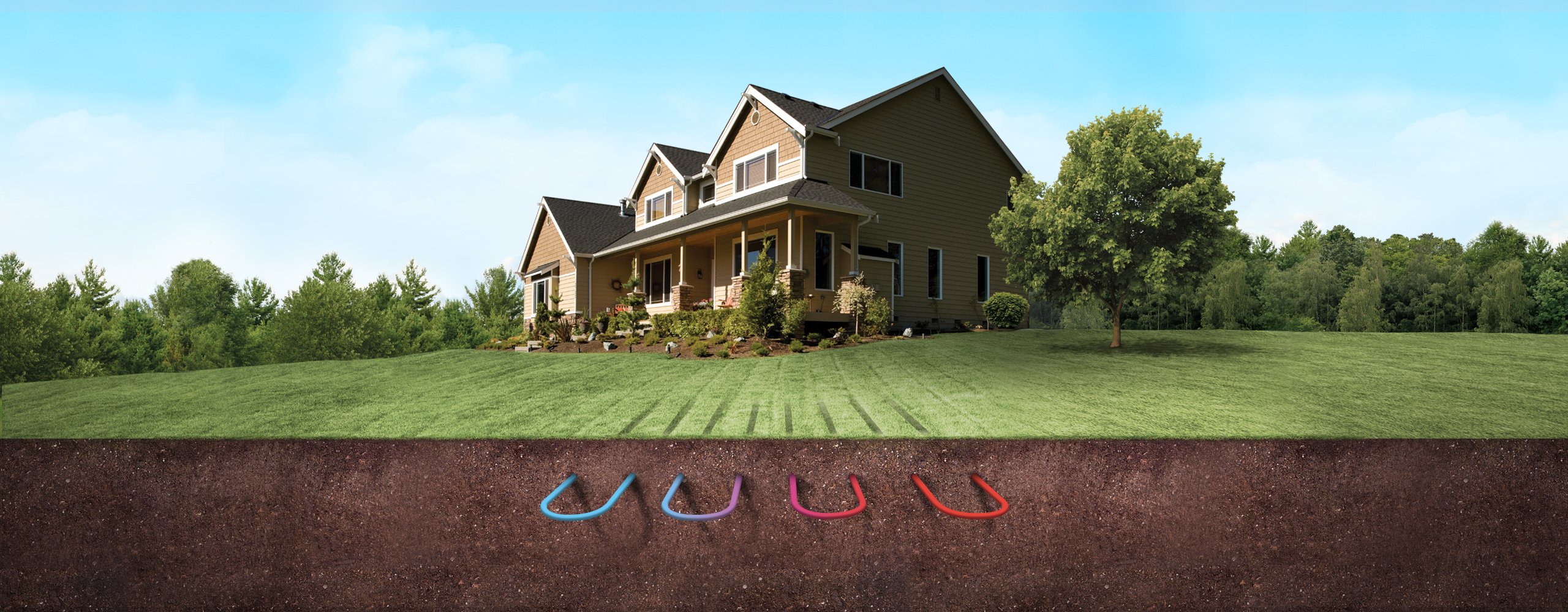The ground source heat pump is an efficient way to reduce your energy costs. You can save money and be green at the same time by installing a geothermal heat pump.
Ground source heat pumps are designed to operate near the earth’s surface, which means they don’t have to go down as deep into the earth as other types of heat pumps do. Because there are fewer obstacles for air to move through, ground source heat pumps use less energy than traditional heat pumps. They also produce much less noise. In addition, because the ground isn’t heated or cooled directly, it allows you to get the benefits of both heating and cooling without having to pay for two separate systems.
Because they are located near the ground, ground source heat pumps use less fuel than conventional heat pumps that are located in buildings. This reduces your carbon footprint and saves money on your utility bills.
There are three basic components to any heat pump system. The first component is the HVAC equipment itself. It includes the furnace, fan coil unit, heat exchanger, compressor, condenser, expansion valve, and evaporator. The second component is the plumbing and electrical work involved in connecting the different parts together. Finally, there is the installation process. Installation involves digging out holes for each part of the heat pump system so that everything will fit properly inside the house.
In order to install a ground source heat pump system, you must first locate the area where you want to build the heat pump, dig the hole, place all the parts of the system in the hole, and then backfill around the entire system. Once everything is installed, you need to connect the various parts together to finish the installation process.
When you’re ready to make an investment in your home’s comfort, there are several factors to consider when choosing between geothermal heat pumps and conventional heat pumps.
Location Matters
Geothermal heat pumps are more expensive than conventional heat pumps, but the cost is justified if the location of your home is right for a geothermal heat pump system. If your home sits close enough to the earth that water temperatures stay above freezing during the winter months, a geothermal heat pump may be the best option for you.
If you live in a colder climate, your chances of getting a good deal on a geothermal heat pump increase greatly. There are many companies that specialize in selling these systems to people who live in cold climates. These companies know what it takes to build a successful geothermal heat pump system, and they’ll have experts who can walk you through the process.
Also, consider how far underground you think you’ll have to drill. Conventional heat pumps can be placed anywhere in the basement, attic, crawlspace, garage, or even under a deck. Geothermal heat pumps can only be drilled below the frost line, which means they cannot be placed in basements or attics. You can’t drill too deeply either. Some manufacturers recommend drilling no deeper than 40 feet (12 meters) below the frost line.
Size Matters
A geothermal heat pump system is not just about choosing one over another. The size of your house plays a big role in determining whether a geothermal heat pump makes sense for your home.
If you have a smaller home, you’ll probably want to choose a smaller geothermal heat pump system. Smaller systems require less power, which can lead to lower utility bills. However, if your home is small, you won’t get the full benefit of this type of system. A larger system gives you more room to maneuver, and therefore better performance.
You may also find that a larger system has more durability. When geothermal heat pumps are larger, they have more moving parts. If one piece breaks, the whole system shuts down. Larger systems tend to last longer, and therefore give you a greater return on your investment.
Price Is Everything
Of course, price is always a factor in buying anything, including home improvements like geothermal heat pumps.
The average cost of a geothermal heat pump system is higher than the cost of a regular conventional heat pump, but you can expect to recoup most of those extra expenses over time. One thing to remember though is that the upfront cost of a geothermal heat pump system is high, but after you recover the initial investment, you’ll see savings year after year.
A word of caution: Make sure you’ve considered all of your options before deciding to buy a geothermal heat pump. There are lots of things you should ask yourself before making such a major decision. For example, you should figure out whether you’d rather invest in a geothermal heat pump system now or wait until future generations inherit your home. Also, you should decide if you would be comfortable buying a system with an unknown warranty and service history.
There are many factors to consider when purchasing a geothermal heat pump. The main factor is location. If your home sits close enough to the earth that water temperatures remain above freezing throughout the winter months, geothermal heat pumps are a great choice. If you live in a colder climate, however, you need to make sure the ground in your backyard stays warm enough for the heat pumps you purchase to work properly.
With advancement in technology there are varieties of the ground pumps that are available for the people. A person can go through the entire option ad plan to choose the one that is efficient. A person should have the main motive in reaching the option with the good results. A person can visit maasoojuspumbad and get the detail.



